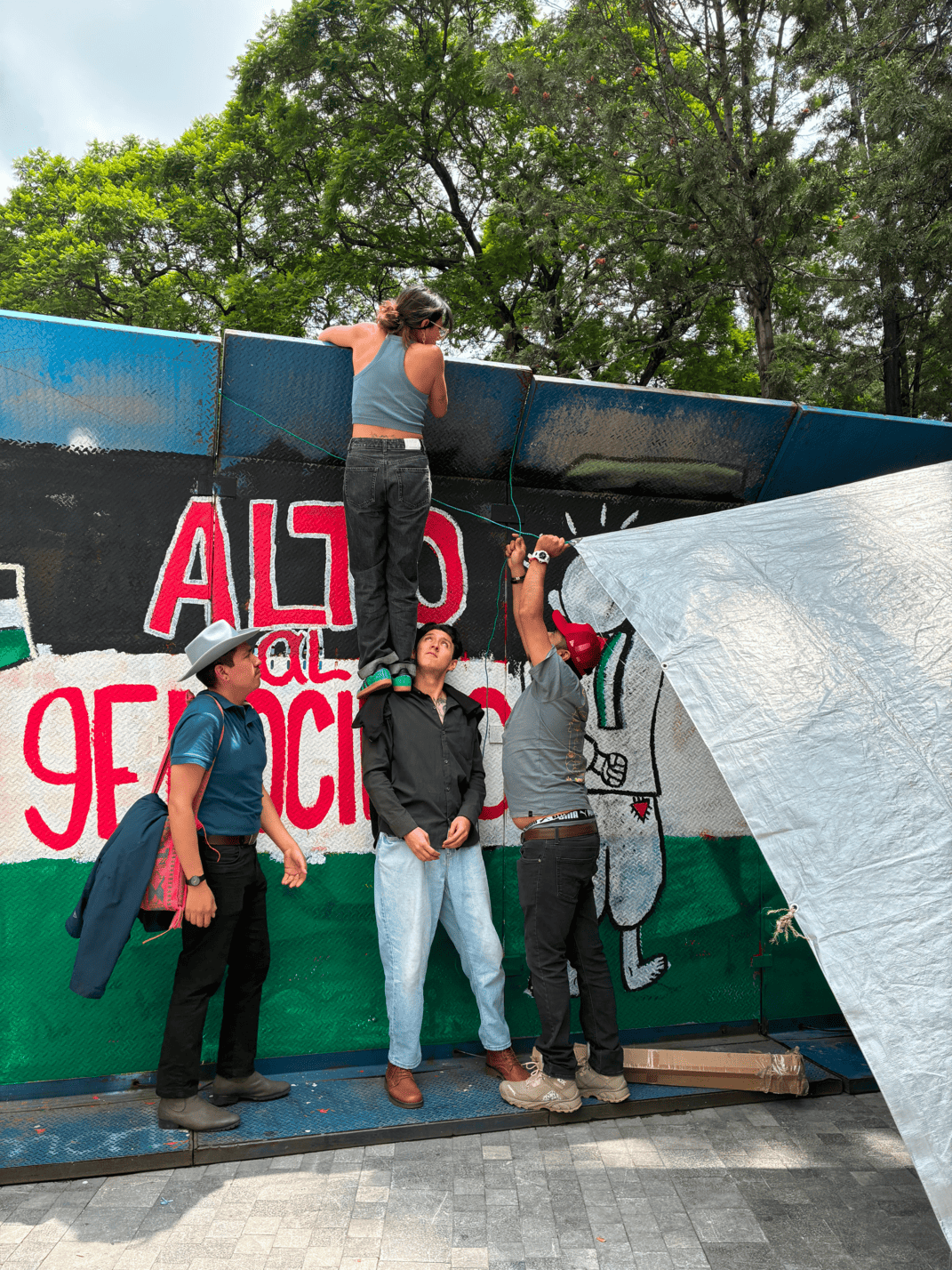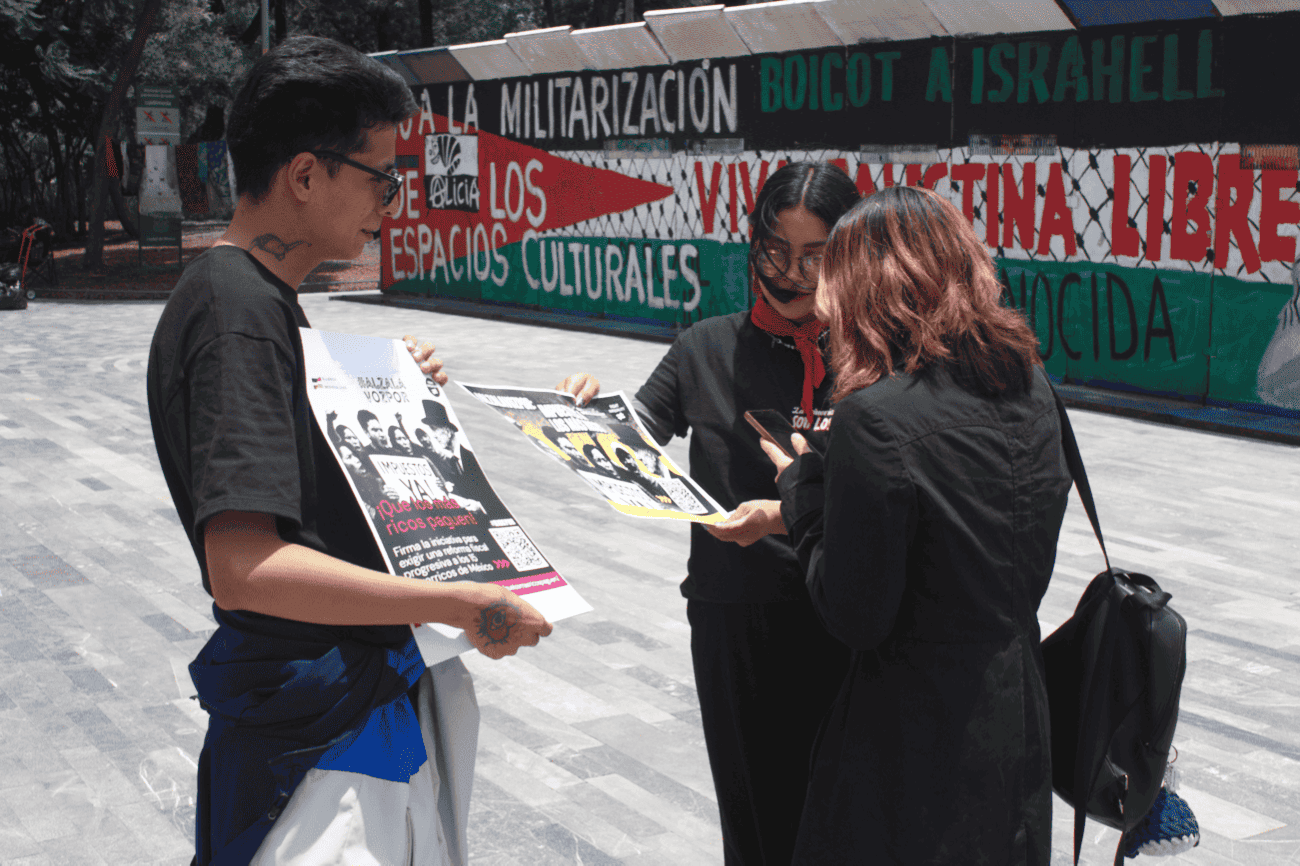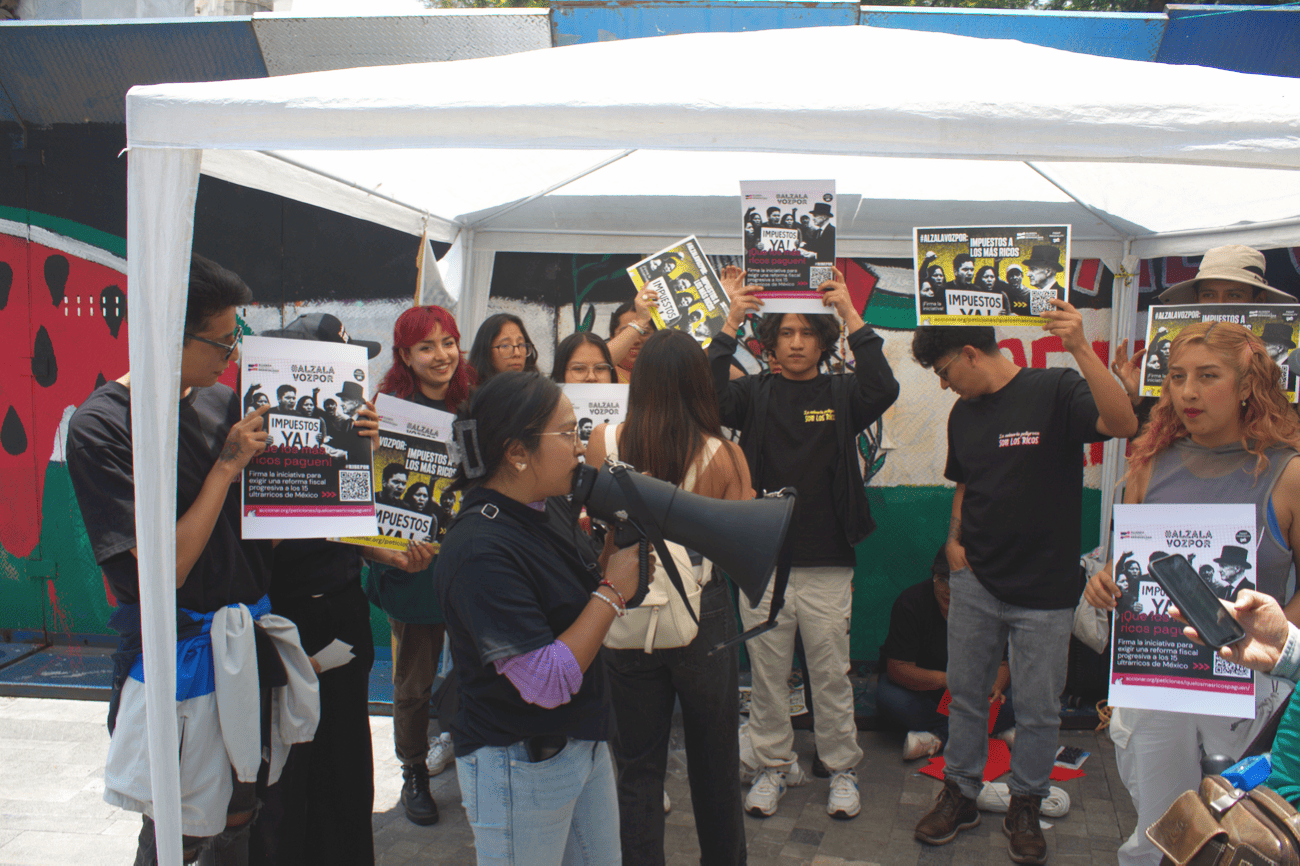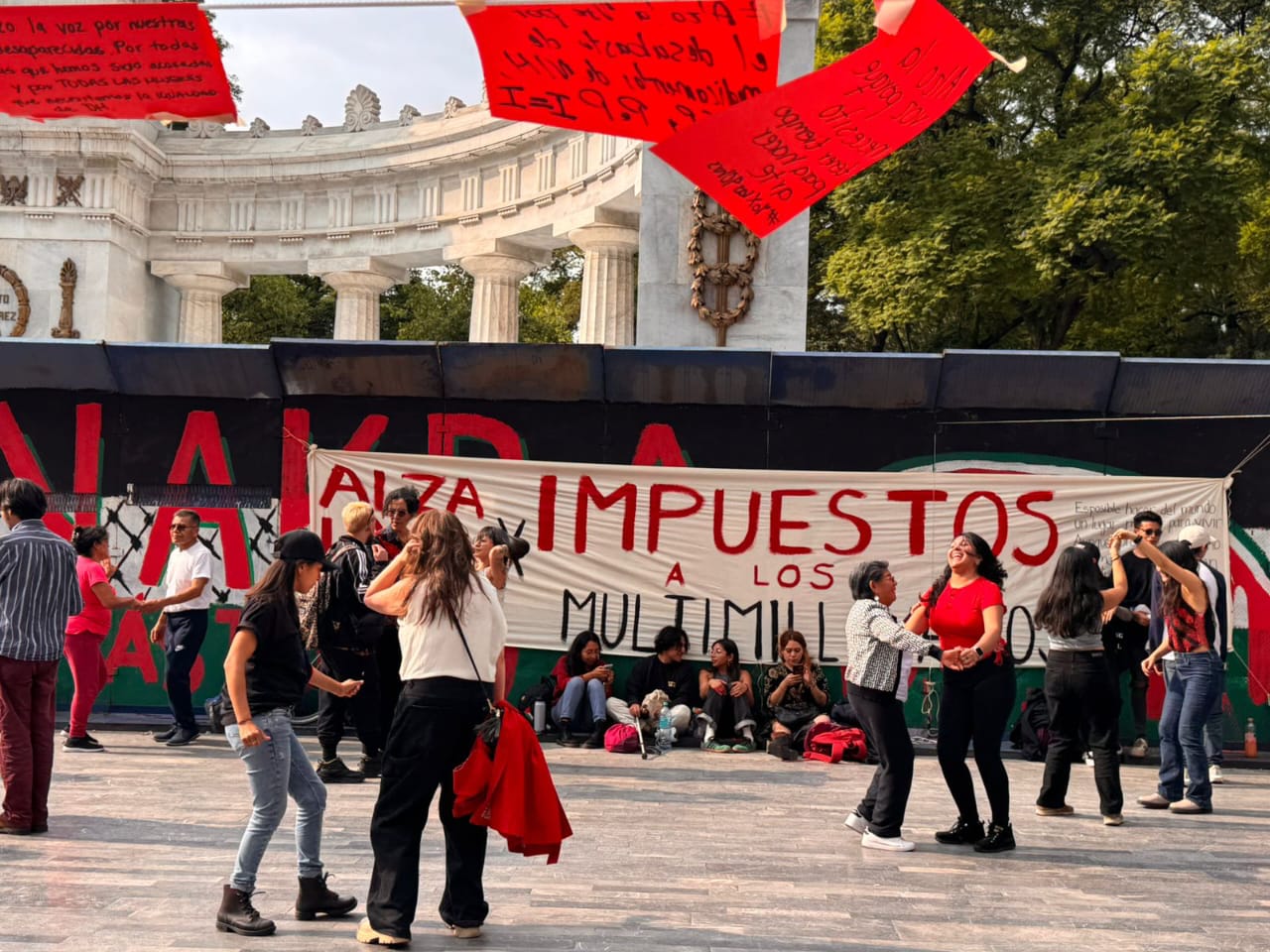The protest that danced for fiscal justice
Michelle Cruz, FIA Volunteer for “Weavers of Equality”
In the heart of Mexico City, the Hemiciclo a Juárez woke up with a different atmosphere. Among the last vendors of the Alameda Central’s political market and the hurried footsteps of everyday life, something more than tents and tarps began to rise: a cultural protest was taking shape. While some hands cut out stickers with slogans and others distributed flyers, legal representatives negotiated with authorities for the use of the space. Everything was being prepared for the act of rising for justice.

It was barely noon when the facilities were ready. Fifteen minutes later, the search began for signatures to support a proposal that, although ambitious, was urgent: to impose a tax on large fortunes, abolish foreign debt, dismantle tax havens, and say goodbye to austerity models.
Posters and T-shirts reading “The dangerous minority are the rich” attracted curious glances from passersby. Some continued on their way, others stopped, read, and asked questions. Flyers in hand, the protesters explained, face to face, the urgency of redistributing wealth.

With a megaphone, a representative of Fight Inequality took the floor. As she spoke about the inequality that suffocates millions, a technical team set up the sound system for the press conference. The space began to fill with people who were not just signing, but staying.
At 12:40 p.m., the conference formally began. Aline Zunzunegui was the first to speak. With clear figures and a firm voice, she proposed a progressive tax reform: a 1% tax on fortunes of $5 billion, 2% on those with $10 billion, and up to 5% on those with more than $15 billion. Sara Arteaga continued the speech with an idea that connected all the demands: the wealth tax is not an isolated request, but part of a broader struggle for labor rights, decent public services, and global justice. “We raise our voices for the 40-hour work week, for the wealth tax, for education and health care for all,” she said.

Next came Myriam Hernández, who reminded everyone that this mobilization was not unique: it was part of a global wave resonating in different territories. While those voices echoed in the streets of the city center, in Honduras, Christopher Castillo called on defenders of land and human rights to echo the same demands.
From the Choluteca River, they shared their message: “We say to the model of land grabbing and dispossession: you will not pass!” There, between the water and the digital world, they intertwined their struggles for life, for the emancipation of peoples, and for the defense of life.
In this way, interconnections challenged borders, systems of oppression, and mechanisms of censorship. To this day, they maintain their stance.
In Mexico, the press conference was closed by Nina Arévalo, who addressed the issue of foreign and illegitimate debt: a historical burden that, she said, should not be paid by the people while the state continues to borrow.
The conference concluded with a slogan: “Fight against: inequality!” chanted by dozens of voices, firm and loud. It was 1:05 p.m.
A few minutes later, the “dance to rise for fiscal justice” began. The rhythm—cumbia, reggaeton, electronic, salsa—filled the air and accompanied the next act: the hanging wall of local demands. A red sheet, hung with clothespins, was an invitation to express one's own demands and link them to the spirit of the protest.
At 3:02 p.m., the volume was turned down. It was time to remember why they were there. Óscar Pichardo and Rodolfo Gómez, from the Frente por las 40 Horas (Front for 40 Hours) in Guanajuato and Querétaro, took the microphone. They reaffirmed that this struggle was not just about numbers, but about dignity.

They danced, talked, listened. And amid the swaying bodies and slogans, Luna Ruths appeared. The artist, who stumbled upon the protest almost by chance, took the microphone and gave a powerful performance: “We shout at the system, here we are resisting, enjoying ourselves and dancing... We want to be free and rebellious in dignity.”
But at five o'clock, the rain came. First it was a few drops, then a curtain that tested everyone's spirits. Some people took shelter, others danced in the rain despite the slippery ground. Finally, when the downpour subsided, the protesters got back on the same truck that had brought them there. They left with wet feet but their voices intact.
That day, amid music, demands, and resistance, voices were raised. And although the rain stopped the sound, it failed to drown out the message.
